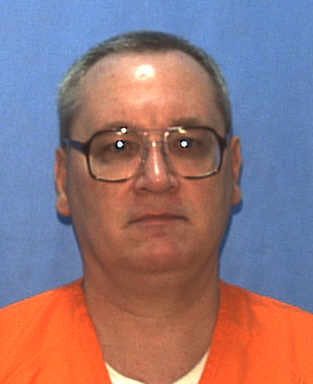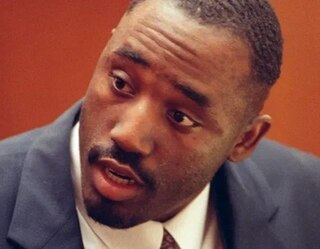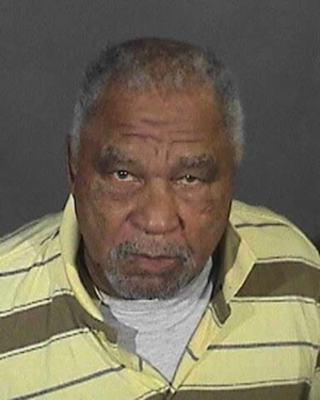Related Research Articles

Gary Leon Ridgway is an American serial killer known as the Green River Killer. He was initially convicted of 48 separate murders committed between the early 1980s and late 1990s. As part of his plea bargain, another conviction was added, bringing the total number of convictions to 49, making him the second-most prolific serial killer in United States history according to confirmed murders.

The Cleveland Torso Murderer, also known as the Mad Butcher of Kingsbury Run, was an unidentified serial killer who was active in Cleveland, Ohio, United States, in the 1930s. The killings were characterized by the dismemberment of thirteen known victims and the disposal of their remains in the impoverished neighborhood of Kingsbury Run. Most victims came from an area east of Kingsbury Run called "The Roaring Third" or "Hobo Jungle", known for its bars, gambling dens, brothels and vagrants. Despite an investigation of the murders, which at one time was led by famed lawman Eliot Ness, the murderer was never apprehended. In 2024, the Cuyahoga County Medical Examiner's Office teamed up with the DNA Doe Project to exhume some of the victims and use investigative genetic genealogy to identify them.

Henry Lee Lucas, also known as the Confession Killer, was an American convicted murderer. Lucas was convicted of murdering his mother in 1960 and two others in 1983. He rose to infamy as a claimed serial killer while incarcerated for these crimes when he falsely confessed to approximately 600 other murders to Texas Rangers and other law enforcement officials. Many unsolved cases were closed based on the confessions and the murders officially attributed to Lucas. He was convicted of murdering eleven people and condemned to death for a single case with a then-unidentified victim, later identified as Debra Jackson.

Daniel Owen Conahan Jr. is an American convicted murderer, rapist, and suspected serial killer. Conahan was convicted of one murder, but has been linked to a dozen murders, mostly of transients seeking employment and gay men in the Charlotte County, Florida area in what came to be known as the Hog Trail Murders. Conahan has also been named the prime suspect in the additional murders of eight men, collectively referred to as the Fort Myers Eight, who were discovered in a mass grave site in 2007.

Benjamin Thomas Atkins , also known as The Woodward Corridor Killer, was an American serial killer and rapist who murdered, tortured, and raped 11 women in Highland Park and Detroit, Michigan, during a period of eight months between December 1991 and August 1992. He was apprehended after being arrested for rape charges and soon after he confessed to the murders. He was ultimately found guilty and given several life sentences in April 1994. He died from AIDS in 1997.

The Doodler is an unidentified serial killer believed responsible for between six and sixteen murders and three assaults of men in San Francisco, California, between January 1974 and September 1975. The nickname was given due to the perpetrator's habit of sketching his victims prior to stabbing them to death. The perpetrator met his victims at gay nightclubs, bars and restaurants.

Rodney James Alcala was an American serial killer and convicted sex offender who was sentenced to death in California for five murders committed between 1977 and 1979. He also pleaded guilty and received a sentence of 25 years to life for two further murders committed in New York. He was also indicted for a murder in Wyoming, although the charges filed there were dropped. While Alcala has been conclusively linked to eight murders, the true number of victims remains unknown and could be as high as 130.

The Gilgo Beach serial killings were a series of murders spanning from the early 1990s until 2011. Many of the victims' remains were found over a period of months in 2010 and 2011 during a police search of the area along Ocean Parkway, near the remote beach town of Gilgo in Suffolk County, New York. The search was prompted by the disappearance of Shannan Gilbert, who, like many of the known victims, worked as an escort and advertised on Craigslist. The perpetrator in the case is known as the Long Island Serial Killer, the Manorville Butcher, or the Craigslist Ripper.
The Edgecombe County serial killer is an unidentified serial killer in the surroundings of Edgecombe and Halifax counties in North Carolina, United States. There are ten suspected victims, all African-American women, and the remains of eight have been recovered. Because some of the victims had been found near the Seven Bridges Road in Rocky Mount, the culprit has also been called The Seven Bridges Killer. All the victims were black, engaged in prostitution and had problems with drug addiction at various times.
The B1 Butcher is an unidentified serial killer in Namibia. The B1 Butcher murdered at least five women between 2005 and 2007, with all murders related to the National Road B1.
The Redhead murders is the media epithet used to refer to a series of unsolved homicides of redheaded females in the United States between October 1978 and 1992, believed to have been committed by an unidentified male serial killer. The murders believed to be related have occurred in states including Tennessee, Arkansas, Kentucky, Mississippi, Pennsylvania, and West Virginia. The murders may have continued until 1992. The victims, many remaining unidentified for years, were usually women with reddish hair, whose bodies were abandoned along major highways in the United States. Officials believe that the women were likely hitchhiking or may have engaged in prostitution.

Samuel Little was an American serial killer of women who confessed to committing 93 murders between 1970 and 2005. The Federal Bureau of Investigation's Violent Criminal Apprehension Program has confirmed his involvement in at least 60 murders, the largest number of confirmed victims for any serial killer in American history. Little provided sketches for twenty-six of his victims although not all have been linked to known murders.
Simon Majola, known as The Bruma Lake Killer, is a South African robber and serial killer who, with accomplice Themba Nkosi, was responsible for the killings of at least eight people in the vicinity of the Bruma Lake in Bruma, Gauteng. Majola was given eight life sentences, and is currently imprisoned.
Adrián Javier Arroyo Gutiérrez, known as The Southern Psychopath, is a Costa Rican serial killer and rapist who killed between 6 and 11 women in several of San José's neighborhoods. He was sentenced to 110 years' imprisonment for his crimes.
Maina Ramulu is an Indian serial killer who murdered 16 to 18 women in India during three to four separate murder sprees.
The Gold Sock Killer is the moniker of an unidentified American serial killer who murdered a woman and two teenage girls in Broward County, Florida, between July and August 1973. His nickname came from how he strangled his victims to death with socks; however, a gold-colored sock was only used in two instances.
Richard Jabulani Nyauza is a South African serial killer and rapist who murdered 16 women in and around the Rossway Quarry. Shortly after becoming infected with HIV in 2002, Nyauza murdered his first five victims near Olievenhoutbosch. Later that year, he was arrested for attempting to rape a child, but was released in 2005 after being found not guilty. Weeks later, he began murdering women again in an area about 2.8 kilometres away from the area the original murders occurred in. Nyauza murdered 11 more women until his arrest in 2006. Following his trial, he was found guilty and given 16 life sentences as well as an additional 140 years imprisonment.

Themba "666" Vilakazi, also known as The Railway Killer, is a South African serial killer and satanist who murdered at least three black males along the railways of Pretoria between July and November 2005. His modus operandi typically consisted of undressing his victims, excessively stabbing them to the point of death, and taking their shoes. Although he claimed the murders were motivated by satanism, experts disputed this and alleged that they were sexually-motivated.
References
- 1 2 3 4 "Who is the Newlands serial killer?". www.iol.co.za. 1 November 2003. Archived from the original on 11 July 2022. Retrieved 11 July 2022.
- ↑ "Serial killer: Four more victims". News24. 24 May 2003. Archived from the original on 11 July 2022. Retrieved 11 July 2022.
- 1 2 Hall, Susan (2021). The World Encyclopedia of Serial Killers, Volume Four T-Z. WildBlue Press. p. 252.
- ↑ Mthembu, Bongani (11 August 2003). "Grisly discoveries point to serial killer". www.iol.co.za. Retrieved 11 July 2022.
- 1 2 Singh, Anil (11 August 2003). "Skeletons found in Durban's 'killing fields'". www.iol.co.za. Retrieved 11 July 2022.
- ↑ Tibbatts, Emily (25 August 2003). "Nouvelles victimes du tueur de Durban". TUEURS EN SERIE.org (in French). Archived from the original on 26 April 2021. Retrieved 11 July 2022.
- ↑ "Serial killer count rising". News24. 27 August 2003. Archived from the original on 11 July 2022. Retrieved 11 July 2022.
- 1 2 3 Maughan, Karyn (1 May 2007). "Murdered by serial killers, buried as paupers". www.iol.co.za. Archived from the original on 11 July 2022. Retrieved 11 July 2022.